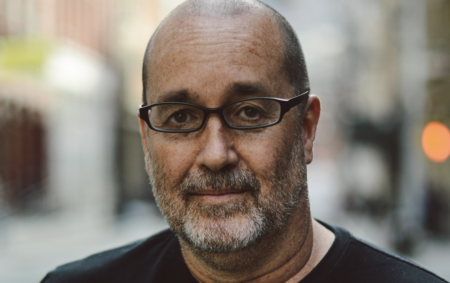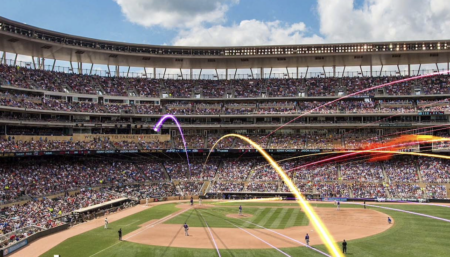BMO Field, home to Toronto FC and the Toronto Argonauts CFL teams, recently reopened following a two-year renovation project. The two-phase, US$150m scheme aimed to transform the venue into a world-class, multipurpose stadium, so Stadia spoke with Ron Turner, Gensler principal and company-wide Leader of Gensler’s Sports and Convention Centers practices.
Talk us through the timeline of the BMO Field project
The project was awarded in December of 2013 and an expedited programming phase was conducted to establish what the project’s real objectives were. Very early on, it was clear that the scope of work was large enough that it needed to be split into two phases, with the additional seating and revenue generating opportunities taking precedence in Phase 1, while the canopy, which needed to undergo a much higher level of analysis and design, would follow in Phase 2. Construction began in October of 2014, with a majority of the Phase 1 work being completed in time for the Toronto FC home opener on May 10, 2015. Foundation work for the Phase 2 canopy began in the summer of 2015, with a bulk of the work taking place from November 2015 until May 2016. In addition, a parallel phase of work took place during Phase 2 to enable the Toronto Argonauts CFL team to begin play at BMO Field in June 2016.
What were the project’s key objectives?
The original stadium was constructed on a shoestring budget about a decade ago, so there was a real lack of premium spaces and fan amenities. Our charge from MLSE [Maple Leaf Sports & Entertainment, the owners of the franchises] was to create new revenue-generating premium experiences, enhancing the fan experience by adding food and beverage options, boosting washroom fixture counts, and making the game experience more impactful through the addition of seating and the canopy to enhance the home field advantage.
What were the main challenges presented by the project?
The biggest issue was schedule, both for developing the design and for the actual construction. Our partner PCL has stated that 12 months of construction was condensed into seven months during Phase 1, and Phase 2 was also a very tight timeline for the construction of the new canopy and CFL-enabling work.
How were these overcome?
Communication was key, both during the design phase with our consultants, and during construction with MLSE, ICON Venue Group, PCL, and our consultant team. Many decisions and reviews had to be made in an expedited fashion in order to meet the Phase 1 opening day schedule, with some work being deferred until later in the process that was not deemed essential. As a firm with global sports expertise and directed local involvement, having the resources of Gensler’s Toronto office made a huge difference in our ability to communicate and respond seamlessly.
What are the challenges of transforming a soccer-specific venue into a world-class multipurpose stadium?
The key was to allow the much larger CFL field to be accommodated while still keeping the intimacy to which Toronto FC supporters had grown accustomed. For example, the first five rows of the south grandstand were removed to allow for the longer CFL field, but have been replaced with removable seating for soccer matches that is nearly identical to what was there previously. Keeping the soccer supporters pleased was a major goal, as the loyalty and energy that they bring to TFC matches is essential to not only the fan experience, but the success of the team on the pitch. Also, the decision was made to keep the natural grass surface for the soccer field, but the field extensions for CFL will be artificial to allow seating to be placed atop those areas in soccer configuration – a decision that has led to much research by both the design team and the grounds crew and investment by MLSE.
Can you breakdown some of the revamped facility’s new capabilities? What’s involved in increasing the capacity past 30,000 for special events?
Seating was increased to 30,025 for Toronto FC matches (including standing room) and the Argo’s capacity will be roughly 27,000. On the east side of the stadium, 13 new suites were added in addition to a loge seating/lounge area and two party suites. The existing Rogers Club under the west grandstand was nearly tripled in size while two other clubs, the Tunnel Club under the west grandstand and the BMO Club under the east grandstand, were added, both with access to new field-side seating. A new Main Concourse was added on the south and east sides to allow for easier access from one side of the venue to the other while adding many new food and beverage options and dramatically increasing washroom fixture counts.
What was the total cost of the redevelopment? How was it funded?
The two phases of renovations to BMO Field totaled US$150m. MLSE contributed US$120m of that amount with the City of Toronto (who owns the facility) paying US$10m, the province of Ontario contributing US$10m and the Toronto Argonauts contributing US$10m toward the cost of retrofitting the stadium to accommodate the CFL field.
How does the dual playing field system work?
The extent of the existing natural grass playing surface was retained, while the extensions at the north and south end of the field to allow for CFL play are artificial turf, since those areas are typically covered by seating in the soccer configuration and natural grass underneath would just die. With football field markings being of particular concerns to soccer purists, there are actually two locations where the CFL field can be striped so that the lines do not have to be put down in the same location for every game. As a result, there are actually two sleeves in each end zone where the goal posts can be inserted. In addition, with the shadows cast from the canopies, grow lighting systems have been imported from the Netherlands to account for the natural grass field receiving less natural sunlight.
Are there elements of the design of the new venue that you think work particularly well and that you’re particularly proud of?
The canopy sets a new standard in the MLS with regard to intimacy and presence. It has already had a dramatic impact on the fan experience and keeping crowd noise in, helping elevate the home field advantage. This canopy now has a large enough presence in the city skyline and from the adjacent Gardiner Expressway to help create a new identity for BMO Field, Toronto FC and the Toronto Argonauts.
Are there any elements that you would do differently, with the benefit of hindsight?
More constructability reviews of design details would have streamlined work in the field, but in terms of the layout of the facility or the features, everyone is happy with what has been added.
Has the venue ‘upped the game’ for similar venues? Do you see other stadia looking at BMO Field as an example of what could be done at their ground?
Yes. This is now the largest soccer-first stadium in MLS and there have already been many inquiries from around the league about the canopy and premium spaces that have been added to the existing facility.
Are there further plans/scope for even further development of the stadium?
There have been discussions about plans to upgrade the suites on the west side of the stadium (which were original suites when the stadium opened) but nothing confirmed in terms of timing, etc.




